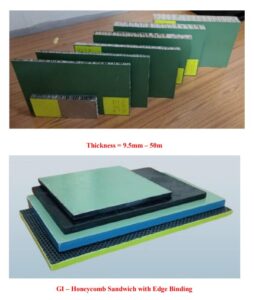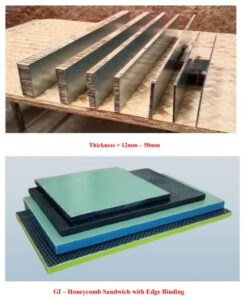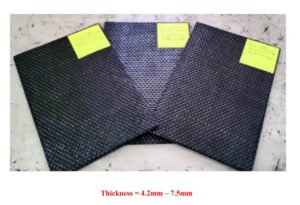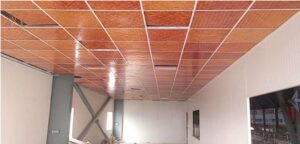Bamboo and sugarcane are two renewable resources gaining popularity in eco-friendly products and sustainable living practices. While both materials are lauded for their environmental benefits, they serve different purposes and have distinct characteristics. In this blog, we’ll compare bamboo and sugarcane in terms of their pros, cons, applications, and sustainability. We’ll also answer frequently asked questions and provide tips for choosing between these versatile materials.
Overview of Bamboo and Sugarcane
Bamboo: A fast-growing woody grass with diverse applications, from construction and textiles to paper and furniture. Bamboo is prized for its strength, durability, and aesthetic appeal.
Sugarcane: A tropical grass primarily grown for sugar production. Beyond sugar, sugarcane fiber (bagasse) is a valuable byproduct used to make paper, biofuel, and eco-friendly packaging.
Pros and Cons of Bamboo
Pros:
- Rapid Growth: Bamboo grows quickly (3-5 years to maturity) and regenerates after harvesting.
- Strength and Durability: Comparable to hardwood, bamboo is ideal for furniture, flooring, and construction.
- Eco-Friendly: Absorbs CO2, produces oxygen, and is biodegradable.
- Versatile Applications: Used in construction, textiles, paper, and even food (bamboo shoots).
- Aesthetic Appeal: Its natural, elegant look enhances interior and exterior decor.
Cons:
- Processing Requirements: Needs treatment to resist pests and enhance durability.
- Cost: High-quality bamboo products can be expensive.
- Moisture Sensitivity: Without treatment, bamboo can warp or mold.
- Geographical Limitations: Grows best in tropical and subtropical regions.
Pros and Cons of Sugarcane
Pros:
- High Renewability: Sugarcane grows rapidly and has a short harvesting cycle.
- Byproduct Utilization: Bagasse, the fibrous residue, is used to produce paper, biofuel, and biodegradable packaging.
- Carbon Absorption: Acts as a carbon sink during its growth cycle.
- Affordability: Sugarcane products, like bagasse plates and cups, are cost-effective.
- Water Efficiency: Requires less water for processing compared to many other crops.
Cons:
- Soil Depletion: Intensive sugarcane farming can degrade soil quality over time.
- Limited Strength: Sugarcane bagasse products are not as strong as bamboo for construction or furniture.
- Regional Restrictions: Thrives only in tropical climates.
- Energy Use: Processing sugarcane into bagasse products requires significant energy.
Environmental Impact
Bamboo:
- Bamboo is highly sustainable due to its rapid growth and ability to regenerate without replanting.
- Its cultivation requires minimal pesticides or fertilizers, contributing to its eco-friendly profile.
- However, bamboo processing can involve chemicals that reduce its environmental benefits.
Sugarcane:
- Sugarcane farming absorbs CO2 and utilizes waste effectively through bagasse.
- Overharvesting and monoculture farming can lead to soil degradation and biodiversity loss.
- Sugarcane products, such as bagasse packaging, decompose naturally and reduce plastic waste.
FAQs
1. Which is more sustainable, bamboo or sugarcane?
- Bamboo is more sustainable in terms of its growth cycle and versatility. Sugarcane is sustainable when its byproducts are utilized effectively.
2. Can sugarcane replace bamboo in construction?
- No, sugarcane does not have the strength required for construction applications.
3. Are bamboo products more durable than sugarcane products?
- Yes, bamboo is more durable and suitable for long-term use, whereas sugarcane products are better for single-use or lightweight applications.
4. Which is better for packaging, bamboo or sugarcane?
- Sugarcane bagasse is commonly used for packaging due to its lightweight and biodegradable properties.
5. Is bamboo or sugarcane more cost-effective?
- Sugarcane products are generally more affordable, but bamboo offers better value for durable applications.
Tips for Choosing Between Bamboo and Sugarcane
- Identify Your Needs: Choose bamboo for strength and durability, and sugarcane for lightweight, disposable products.
- Consider Sustainability: Opt for FSC-certified bamboo and responsibly sourced sugarcane products.
- Evaluate Cost: Bamboo may have a higher upfront cost but provides long-term value, while sugarcane is cost-effective for short-term use.
- Check Biodegradability: Both materials are biodegradable, but ensure they are not treated with harmful chemicals.
- Blend Materials: In some cases, combining bamboo and sugarcane products can maximize utility and sustainability.
People also search for
- Bamboo vs sugarcane comparison
- Sustainable materials: bamboo and sugarcane
- Bamboo products vs sugarcane products
- Eco-friendly packaging materials
- Bamboo construction vs sugarcane applications
- Renewable resources: bamboo and sugarcane
- Bagasse packaging vs bamboo packaging
- Biodegradable materials for eco-conscious living






